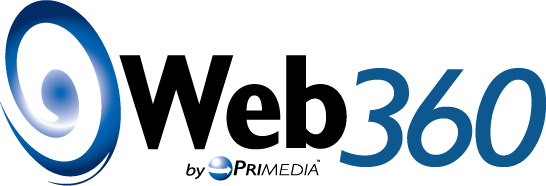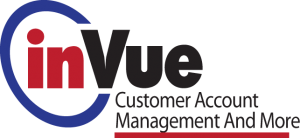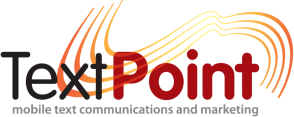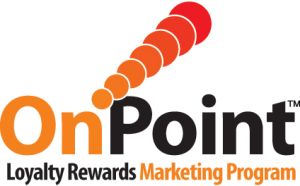Smart Choices Stretch Your Marketing Dollar
Posted: 04/01/15
By Rich Rutigliano, PriMedia, Inc.
What is your company's image? How do customers and potential customers perceive you?
This is a vital question for every Oilheat retailer, because consumers make choices based on their preferences and perceptions. If their perception of your company aligns with their preferences, your chances of keeping or winning their business are greatly improved.
It would be convenient if you could achieve the success you want simply through outstanding performance, but the reality is that a company can do great work every day and still struggle to hold its ground. You need to bolster loyalty within your customer base proactively, while also attracting new customers – people who have no first-hand experience with your company.
Customers and prospects form opinions of your company based on whatever they see and hear, whether positive or negative. Every positive perception bolsters your image, while every negative perception diminishes it. Of course, some perceptions are stronger than others, so it pays to prioritize your marketing efforts.
When you invest in marketing, you take control of your image. You develop positive messages about your company and promote those to create favorable impressions. The more aggressive you are in promotion, the more your message becomes the primary shaper of customer perceptions.
With an unlimited marketing budget, you could ensure that most everyone in your market knows your name and your message, but local Oilheat companies generally don't have that luxury. Allocating your money effectively is critical. Figure out which investments are essential and which are optional.
One common mistake you see in Oilheat is companies skimping on the upfront work, namely message development and packaging of products and services. Some retailers are over-focused on media buying and under-focused on the message and product line.
The cost of a media buy does not vary according to the strength of the message, but the value that you receive varies greatly. By investing in message and product development up front, you increase the value of every subsequent purchase: websites, advertising, newsletters, etc.
Identify Your Strengths
All successful marketing begins with a winning image. Imagine a potential customer who has never done business with you. Who are you to them? If you are cultivating your image effectively, they probably know your name, and they perceive you as a good company. As they look more closely, their initial positive impression is reinforced, and they easily distinguish you as a leader in the market. That is why you've been investing in marketing outside your base: so that strangers can readily identify you as the best choice when they are seeking a new provider.
Ask the same question about your existing customers: Who are you to them? They have a lot more to go on than those unknown potential customers, and their perceptions are based on a combination of experience and image. Your excellent performance furnishes the necessary positive experience, but that alone is not enough. You need to be seen as the best company for the job now and in the future, so that their loyalty is unshakable. When competitors tempt them, or influential friends boast about their recent fuel conversion, your customer has to believe that you are the one with the right answers.
Good marketing is highly effective in shaping perceptions. A credible message repeated with sufficient frequency comes to define you. Potential customers don't need to know a lot about you, but they need to recognize your name and have positive associations with it.
Start by identifying your company's unique mission and values. One size does not fit all. Some Oilheat companies are looking to grow by diversifying into other home services, while others are making a commitment to conservation or alternative energy. Take stock of what you have to offer and develop compelling product and service bundles – and messaging to match.
Once you spell out who you are and what direction you're going in, you get to the tricky part. How do you crystallize your message into a few simple elements like names, logos and taglines? This is specialized work, and it makes sense to work with marketing professionals who have mastered the challenge.
Fix the Weak Links
Once you have identified your message and developed the key elements, the next step is outreach. Planning and budgeting are essential in this stage to ensure that you are addressing your most pressing needs. For most retailers, it makes sense to target both existing and potential customers. You should also strike a balance between exploiting new opportunities and eliminating weak links.
Your weak links are all those things that reflect negatively on your company. Unfortunately these can be numerous and varied: ineffective Internet presence, inconsistent customer service, faded signs, outdated brochures, and more. Every chink in your armor offsets the positive impressions you make elsewhere. Take inventory of your weaknesses and address the most serious ones first.
Your website is the linchpin, serving a variety of important functions. For existing customers, it is a place for them to transact business with you: contacting you, paying you, and scheduling deliveries and service, and more. For potential customers, it's where they discover you and learn how you can help them. Their first visit to your site might be your best opportunity to make a great impression and inspire them to choose you.
A strong website is a great capital investment. You create a good one and perform "periodic maintenance" to keep the information fresh and the functionality up to date, and it delivers solid value for years to come. Today's customers expect you to communicate effectively with them, and a Web site is a great venue that works hand-in-hand with other media such as newsletters, e-mails and advertising. Every ambitious Oilheat retailer should have a highly functional Web site, so that existing customers can serve themselves easily and new customers can be enticed to join the fold.
Another essential is your customer service. One bad customer service experience can cost you an account, so you need to make sure that all your employees understand your mission and standards. When we conduct customer service training, dealers are often surprised by the improvement in performance throughout the company. You might think that everyone knows what good customer service entails, but employees achieve a new level of commitment when they get together for a few hours and focus on the business of satisfying the customer. Inconsistent customer service is one of those negatives that can offset a lot of good work elsewhere, so it really pays to make your service consistently great.
Question Everything
After your Web site and customer service, here are some other potential weak links to consider.
Customer outreach: Communication is a great way to strengthen the ties that bind your customers to you and inspire them to do more business with you. When you introduce new products and services, existing customers are your best prospects. Reach out to them regularly with bill inserts, newsletters and e-mails to reinforce the strong messaging that you have developed. Failure to communicate with existing customers can cost you business and diminish the return on other investments, like new product introductions.
Advertising: Once you have invested in developing a solid message, get it out into the public domain where it can make a difference. Advertising can be expensive, so plan your campaigns for maximum effect with your target market. Failure to advertise reduces your visibility and hurts new business generation.
Trucks: Every truck is a highly visible traveling billboard for your business, and you're paying a lot to have it on the road. Any truck that doesn't carry your best messaging is underperforming as an asset.
Brochures: Brochures that are outdated or sloppy make your company look bad. As weak links go, these are a low priority because they generally have limited circulation – unless you're planning a mailing to your customer base. In that case, a bad brochure could be a serious weak link, and you should hold off on the mailing until you have a brochure that includes your new messaging and reflects well on the company.
Uniforms, stationery, etc.: Like brochures, professional looking uniforms and stationery reflect well on your business. If you have new uniforms, consider photographing your staff and using the pictures in new marketing materials. Updated stationery is a high priority if you are planning a mass mailing to your customer base. If you send paper bills, make sure they feature your latest logo and tagline, because your customers are definitely looking at those.
Signs: All your signage should be attractive and reflect your current messaging. A small sign that is visible only on your property is a lower priority than a sign that is easily visible from a busy street.
Two final thoughts: If business is bad, don't fall into the trap of attributing it all to the slumping economy. If you improve your marketing, you could experience some great growth, even before the economy strengthens.
And if you think you can get away with substandard marketing because your local competitors aren't doing much, you could fall victim to your own complacency. One or more of your competitors could be preparing a new campaign now that will make you look bad by comparison. Be proactive and get the jump on the competition before they get the jump on you!
Richard Rutigliano is President of PriMedia, Inc., a full service marketing and communications firm with offices in New York City, Long Island and Boston. The company is now offering free marketing consultations to Oilheat retailers. Phone: 800-796-3342, or visit their Web sites at www.primediany.com and www.oilheat-advertising.com.












